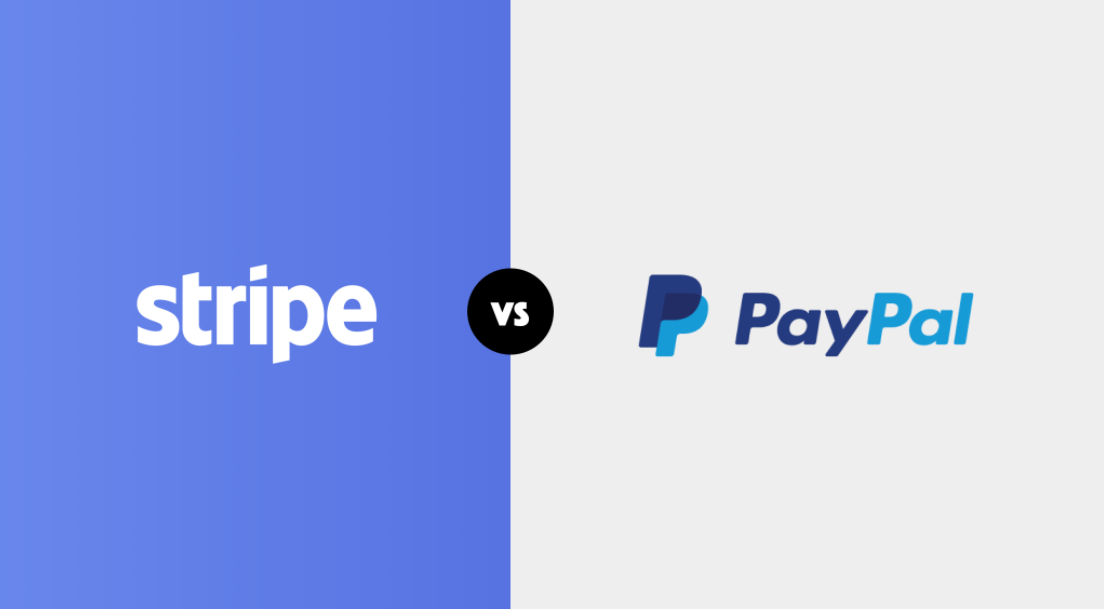In ecommerce, it is usual to find two types of payment methods when we buy online: Paypal and Card. Leaving Amazon Pay aside, Stripe and Paypal have become the two biggest players in online payments today.
Whether you have an e-commerce or you are going to build one, you will know that the payment gateway is one of the key aspects of the business. Nowadays there are many options available, but there are two that stand out from the rest: Paypal or Stripe.

Both platforms bring you almost the same benefits and serve the same purpose. Both are used to collect payments from your e-commerce.
However, there are a number of differences that you should take into account when choosing or using one or the other option.
Paypal
Paypal is a payment solution with much more history than Stripe. They have been on the market for many years. They are a recognized brand, and have the confidence of both customers and merchants.
What are the advantages of PayPal?
PayPal is everywhere. One way or another, it has become the most common way to pay online. In many cases, people can choose to pay with a Card or directly with PayPal. In fact, I’m sure many of your customers already have a PayPal account and operate with it.
- Having a PayPal account makes it a lot easier. When a user wants to buy a product in your store, they just need to log in to their PayPal account. You will automatically receive the money, as well as the shipping address.
- Another of the advantages of Paypal is the security, both in collections and payments. Paypal has a clean system of disputes thanks to years of experience in the sector.
- On the other hand, from a business point of view, PayPal is the default method for paying for a multitude of e-commerce solutions and plugins.
- Paypal is already present almost everywhere. It is available in over 200 countries and already accepts 25 different types of coins. In short, it is the most complete payment tool available today.
- Finally, PayPal has advanced reporting and analytical tools, as well as other utilities for managing payments in e-commerce.
What are the drawbacks of Paypal?
- In many cases, to pay with Paypal it is necessary to have an account. There will be users who do not want to have a Paypal account, but pay by card. If your store only accepts payments through Paypal, many customers may choose to shop elsewhere.
- Another inconvenience of working with Paypal is related to redirections. When a user’clicks’ on buying through Paypal, we automatically redirect them to the platform itself. Once payment has been made, Paypal returns the user to our shop. The problem comes when there is a failure in that redirection. This undoubtedly negatively affects the user experience in our store.
What commissions does Paypal charge?
The usual Paypal commission is 3.4% on the sale plus a fixed commission of 0.35 euros per transaction for amounts under 2,500 €. For amounts over 100,000 euros, the commission is 1.9% plus the fixed commission of 0.35 euros.
In the case that you have Paypal Pro, you pay a fixed fee of 15 euros, but the variable goes to 2.9% with the fixed fee of 0.35 euros.
Stripe
Currently, there are few e-commerce payment solutions that can replace Paypal. The most famous is Stripe. Stripe is one of the most powerful payment gateway solutions available today.
Unlike Paypal, Stripe is not a payment method in itself, but a solution that replaces the traditional POS. Stripe is a backend solution that allows you to make collections and payments in online stores.
What are the advantages of Stripe?
- Stripe is a payment solution that stands out for its simplicity and is limited to processing card payments. Unlike Paypal, Stripe has more payment options available, including Bitcoin, Apple Pay, Android Pay, in addition to almost all existing debit and credit cards.
- Stripe also integrates with a multitude of tools thanks to its API. This allows you to import data from Stripe into different types of software. It also has official plugins for WordPress, Magento or the Shopify app.
Today, many companies already use Stripe, some of them very large (like Facebook for example).
What are the drawbacks of Stripe?
One of the main drawbacks of Stripe is the installation. The integration process is one of the reasons why many e-commerce companies have backed down from using this electronic payment solution.
Stripe requires programming skills. If you use WordPress, there are a number of plugins that make the process easier. Even so, you need to know or be familiar with the tool and its operation.
What commissions does Stripe charge?
Stripe’s commission policy is quite different from that of Paypal. With Stripe you have a fixed transaction fee of 1.4% and a fixed fee of 0.25 euros for payment with European cards, and 2.9% plus the fixed fee for non-European cards.
Compared to Paypal, Stripe’s commissions are much lower than those of Paypal. Also, if your online store receives mainly payments in Europe the savings in commissions is even greater than with Paypal.
Which is better, Stripe or Paypal and which one should I use?
Ideally, both should be used. In the end, it’s all about offering as many payment options as possible to your customers. And then, let them choose the one that suits them best. The only drawback to using both is that we will have to manage our e-commerce charges through two different platforms, which is somewhat inefficient.
In case you want a simple, quick and straightforward solution, it’s best to use PayPal. In just a few minutes you can have a working payment gateway. PayPal is also a recognized, secure and reliable payment solution.
If you want to have a’full-equipped’ payment gateway, you should integrate Stripe. Despite being somewhat more complex, it is a very comprehensive tool that works perfectly.
Ideally, if you want to launch your e-commerce quickly, you should start with PayPal, and gradually integrate Stripe as well. With this you will be able to offer the maximum number of payment possibilities to your customers.
What about you? What’s your payment solution?





